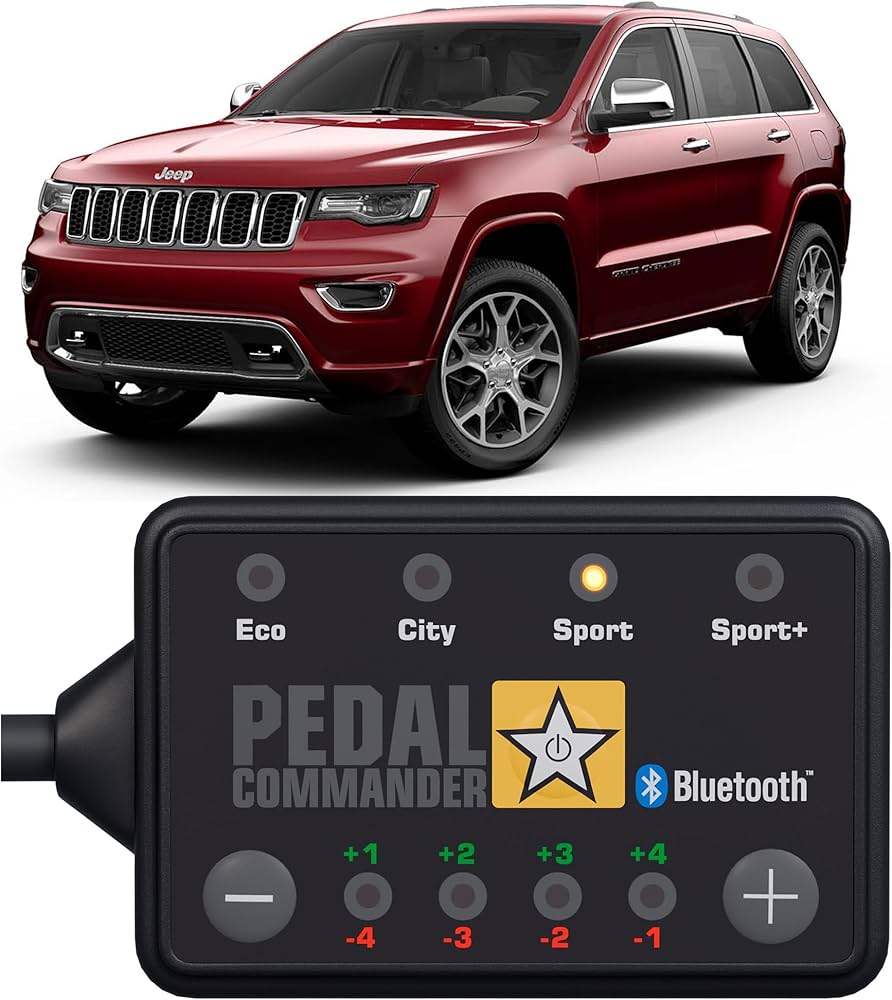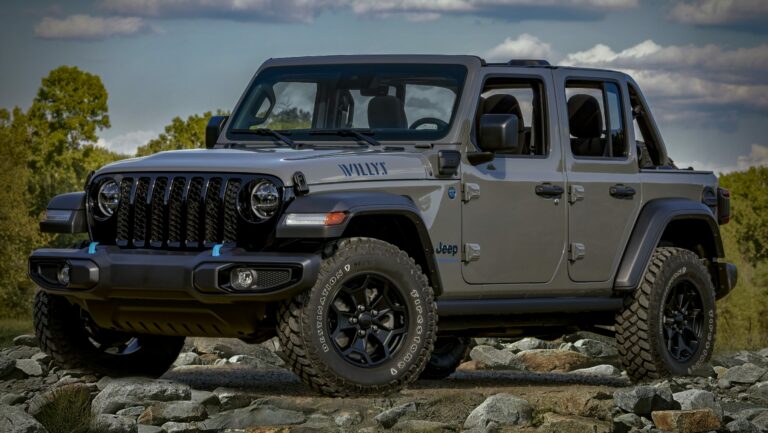How Much Horsepower Does A Jeep SRT Have: Unpacking the Power of a Performance SUV
How Much Horsepower Does A Jeep SRT Have: Unpacking the Power of a Performance SUV jeeps.truckstrend.com
The automotive world is full of fascinating paradoxes, and few are as compelling as the high-performance SUV. Among these, the Jeep Grand Cherokee SRT stands out as a true icon, blurring the lines between rugged utility and track-ready exhilaration. For many enthusiasts and potential owners, the burning question isn’t just "What is a Jeep SRT?" but more specifically, "How much horsepower does a Jeep SRT have?" This question cuts to the core of its identity, defining its capability and its place in the pantheon of powerful vehicles.
This comprehensive guide will delve deep into the heart of the Jeep Grand Cherokee SRT, dissecting its various iterations, exploring the evolution of its powerplants, and ultimately revealing the impressive horsepower figures that have cemented its legendary status. Whether you’re a long-time fan, a curious bystander, or considering owning one of these beasts, prepare to be enlightened about the raw power lurking beneath the hood of a Jeep SRT.
How Much Horsepower Does A Jeep SRT Have: Unpacking the Power of a Performance SUV
The Genesis of SRT: Where Performance Meets Practicality
Before we dive into specific numbers, it’s essential to understand the "SRT" moniker itself. SRT stands for Street & Racing Technology, a specialized high-performance division within Chrysler (and later FCA, now Stellantis). Formed to create ultimate performance versions of popular Dodge, Chrysler, and Jeep vehicles, SRT engineers focused on a holistic approach to speed, encompassing not just brute force but also handling, braking, and aerodynamic enhancements.
When SRT turned its attention to the Jeep Grand Cherokee, the goal was audacious: to create an SUV that could outrun many sports cars while retaining its go-anywhere Jeep DNA. This vision materialized in the form of the Grand Cherokee SRT, a vehicle that defied expectations and redefined what a family hauler could be.
Jeep Grand Cherokee SRT: A Performance Icon Through Generations
The Jeep Grand Cherokee SRT has evolved over two main generations, each bringing increased sophistication and, crucially, more power to the table.
First Generation: WK1 Grand Cherokee SRT8 (2006-2010)
The original Grand Cherokee SRT8 (the "8" denoting its V8 engine) burst onto the scene in 2006, shocking the automotive world. It was a bold statement, combining the practicality of an SUV with the heart of a muscle car.
- Engine: 6.1-liter HEMI V8
- Horsepower: 420 horsepower
- Torque: 420 lb-ft
- Key Features: This engine was a significant upgrade from the standard Grand Cherokee’s V8s, featuring a larger bore, higher compression, and improved cylinder heads. It was paired with a robust five-speed automatic transmission and a full-time all-wheel-drive system (Quadra-Trac II with an electronic limited-slip rear differential) designed to handle the immense power.


The WK1 SRT8 could rocket from 0-60 mph in under 5 seconds, an astounding feat for an SUV of its size and weight at the time. Its distinctive rumble and aggressive stance immediately signaled its performance intentions.
Second Generation: WK2 Grand Cherokee SRT (2012-2021)
After a brief hiatus in 2011, the Grand Cherokee SRT returned in 2012 with the new WK2 platform, bringing a more refined interior, advanced technology, and, most importantly, an even more potent engine.
- Engine: 6.4-liter (392 cubic inch) HEMI V8
- Horsepower (2012-2014 models): 470 horsepower
- Torque (2012-2014 models): 465 lb-ft
- Horsepower (2015-2021 models): 475 horsepower
- Torque (2015-2021 models): 470 lb-ft
- Key Features: The larger 6.4L HEMI (often referred to as the "392 HEMI") brought a significant bump in power and torque. It was initially mated to a five-speed automatic, later upgraded to an eight-speed automatic transmission (from 2014 onwards), which greatly improved acceleration, fuel economy, and drivability. The WK2 SRT also featured an adaptive damping suspension, high-performance Brembo brakes, and various selectable driving modes.

The modest 5 horsepower increase from 2015 onwards was primarily due to minor engine tuning and optimization, often associated with the switch to the 8-speed transmission allowing the engine to operate in its power band more effectively. The WK2 SRT continued the tradition of sub-5-second 0-60 mph times, often dipping into the low 4-second range, making it a formidable contender on the street and track.
The Elephant in the Room: Grand Cherokee Trackhawk (Hellcat-Powered)
While the article specifically asks about "Jeep SRT," no discussion of high-horsepower Grand Cherokees would be complete without mentioning the Jeep Grand Cherokee Trackhawk. It’s crucial to understand that while it shares the WK2 platform and the performance ethos, the Trackhawk is not officially badged as an "SRT" model. It stands as its own distinct, even more extreme, performance variant.
- Engine: Supercharged 6.2-liter HEMI V8 (the "Hellcat" engine)
- Horsepower: 707 horsepower
- Torque: 645 lb-ft
- Key Features: Introduced for the 2018 model year, the Trackhawk took the Grand Cherokee’s performance to an entirely new level, leveraging the supercharged engine from the Dodge Challenger and Charger Hellcat. This monster engine propelled the Trackhawk from 0-60 mph in a mind-boggling 3.5 seconds, making it one of the quickest SUVs ever produced. It also featured an upgraded 8-speed transmission, stronger drivetrain components, and even larger Brembo brakes to handle the immense power.
So, while a "Jeep SRT" typically refers to the 420-475 hp naturally aspirated models, the Trackhawk represents the pinnacle of Grand Cherokee performance, often considered the spiritual successor to the SRT’s "most powerful Jeep" crown.
Beyond Peak Horsepower: Torque and Drivetrain Dynamics
While horsepower figures grab headlines, it’s essential to understand that torque is equally, if not more, important for the real-world feel of acceleration and pulling power. Torque is the rotational force that gets the vehicle moving, especially off the line. The HEMI engines in the Jeep SRT models are renowned for their prodigious torque figures, which, combined with their advanced all-wheel-drive systems, ensure that power is effectively transferred to the pavement.
The Quadra-Trac II and later Quadra-Trac Active On-Demand 4×4 systems in the SRT and Trackhawk models are crucial. They continuously monitor traction and can send up to 100% of the engine’s torque to the rear wheels, or intelligently distribute it front-to-rear as needed, optimizing grip during hard acceleration and cornering. The robust transmissions (5-speed and later 8-speed automatics) are also engineered to handle the massive power output, providing quick, firm shifts that keep the engine in its optimal power band.
Factors Influencing Real-World Horsepower and Performance
The quoted horsepower figures are typically measured at the crankshaft under ideal conditions. In the real world, several factors can influence the actual power delivered to the wheels:
- Dyno Variations: Different dynamometers can produce slightly varying results.
- Maintenance: A well-maintained engine with clean filters, fresh spark plugs, and proper fluid levels will perform closer to its rated power.
- Fuel Quality: High-performance engines like the HEMI SRT models are designed to run on premium octane fuel (91+ RON). Using lower octane fuel can lead to reduced power due to engine computer adjustments to prevent pre-ignition.
- Altitude and Temperature: Denser, colder air generally allows for more power, while high altitudes and hot temperatures can reduce engine output.
- Modifications: Aftermarket modifications like cold air intakes, exhaust systems, performance tunes, or even forced induction (turbochargers/superchargers, beyond the Trackhawk’s factory supercharger) can significantly alter horsepower, though often at the expense of warranty and potentially reliability if not done correctly.
The Driving Experience: What Does That Horsepower Feel Like?
Driving a Jeep Grand Cherokee SRT is an experience. The moment you press the start button, the HEMI V8 barks to life with an aggressive rumble, promising exhilaration. On the road, the immense horsepower translates into effortless acceleration. Merging onto highways becomes a joy, and passing slower traffic is accomplished with a mere flex of the right foot.
The power is not just about straight-line speed; the SRT models are also equipped with sport-tuned suspensions, performance tires, and powerful Brembo brakes that allow them to handle far better than their SUV stature might suggest. The feeling is one of immense capability – a vehicle that can haul the family, tow a trailer, and then, with a simple push of the throttle, transform into a snarling beast capable of surprising many dedicated sports cars.
Practical Advice for Jeep SRT Ownership
Owning a high-horsepower SUV like the Jeep SRT comes with specific considerations:
- Fuel Consumption: Be prepared for significant fuel bills. These powerful V8s are thirsty, especially when driven enthusiastically, and they require premium fuel.
- Maintenance: Regular, diligent maintenance is crucial for these high-performance engines. This includes timely oil changes with specified synthetic oils, brake checks (Brembo pads and rotors can be expensive), and transmission fluid changes.
- Tires: The wide, high-performance tires are essential for grip and handling but wear faster and are more expensive to replace than standard SUV tires.
- Insurance: Due to their performance and higher purchase price, insurance premiums can be higher.
- Used Market: If buying a used SRT, a thorough pre-purchase inspection by a qualified mechanic is highly recommended. Check for service records, signs of abuse (e.g., track use), and any aftermarket modifications.
Table: Jeep Grand Cherokee SRT Horsepower & Price Overview
| Model Generation | Years Produced | Engine | Horsepower (HP) | Torque (lb-ft) | Original MSRP Range (Approx.) | Current Used Market Range (Approx.) |
|---|---|---|---|---|---|---|
| WK1 SRT8 | 2006-2010 | 6.1L Naturally Aspirated HEMI V8 | 420 HP | 420 | $39,995 – $45,000 | $10,000 – $25,000 |
| WK2 SRT | 2012-2014 | 6.4L Naturally Aspirated HEMI V8 | 470 HP | 465 | $55,000 – $65,000 | $20,000 – $35,000 |
| WK2 SRT | 2015-2021 | 6.4L Naturally Aspirated HEMI V8 | 475 HP | 470 | $65,000 – $75,000 | $30,000 – $55,000 |
| WK2 Trackhawk | 2018-2021 | 6.2L Supercharged HEMI V8 | 707 HP | 645 | $86,000 – $95,000+ | $60,000 – $100,000+ |
Note: Original MSRP ranges are approximate for base models and can vary widely with options and specific model years. Current Used Market Ranges are highly variable based on condition, mileage, year, and location. Prices are for illustrative purposes and subject to change.
Frequently Asked Questions (FAQ)
Q1: What does SRT stand for?
A1: SRT stands for Street & Racing Technology, a high-performance division of Chrysler/FCA/Stellantis.
Q2: Is the Jeep Grand Cherokee Trackhawk considered an SRT?
A2: While the Trackhawk is the ultimate performance Grand Cherokee developed by the same team, it is officially branded as a "Trackhawk" and not a "Grand Cherokee SRT." The "SRT" badge typically refers to the naturally aspirated 6.1L and 6.4L HEMI models.
Q3: What’s the main difference between the 6.1L and 6.4L HEMI engines in the SRT?
A3: The 6.4L (392) HEMI is a larger displacement engine, providing a significant increase in horsepower (from 420 hp to 470/475 hp) and torque compared to the 6.1L. It also benefits from newer technology and, in later models, a more advanced 8-speed transmission.
Q4: How fast is a Jeep Grand Cherokee SRT from 0-60 mph?
A4: The WK1 SRT8 (420 hp) typically achieves 0-60 mph in the high 4-second range (around 4.9-5.0 seconds). The WK2 SRT (470/475 hp) can do it in the low to mid 4-second range (around 4.4-4.6 seconds). The Trackhawk (707 hp) is significantly faster, hitting 60 mph in about 3.5 seconds.
Q5: Can I modify my Jeep SRT for more horsepower?
A5: Yes, there’s a significant aftermarket for performance modifications. Common upgrades include cold air intakes, exhaust systems, custom engine tunes, and even supercharger kits for the naturally aspirated models. However, modifications can void warranties and may impact reliability if not done by reputable professionals.
Q6: Is a Jeep Grand Cherokee SRT a good daily driver?
A6: Despite their performance capabilities, SRT Grand Cherokees are generally comfortable and practical for daily driving, offering ample space and typical SUV amenities. However, be prepared for higher fuel consumption, stiffer ride quality compared to standard Grand Cherokees, and potentially higher maintenance costs.
Q7: What kind of fuel does a Jeep SRT use?
A7: Jeep Grand Cherokee SRT models (and the Trackhawk) are designed to run on premium unleaded gasoline (91 octane or higher) to achieve their advertised horsepower and ensure optimal engine performance and longevity.
Conclusion
The question of "How much horsepower does a Jeep SRT have?" opens the door to understanding a remarkable category of vehicles. From the groundbreaking 420 horsepower of the original WK1 SRT8 to the refined 475 horsepower of the later WK2 SRT, and finally, the astonishing 707 horsepower of the Trackhawk, these machines consistently push the boundaries of SUV performance.
The Jeep Grand Cherokee SRT isn’t just about raw numbers; it’s about the thrilling blend of practicality and extreme power, delivering an exhilarating driving experience unlike any other SUV. It stands as a testament to engineering prowess, proving that an SUV can indeed be a legitimate performance vehicle, capable of delivering supercar-like acceleration while retaining the versatility that makes a Jeep a Jeep. For those who crave power without sacrificing utility, the Jeep Grand Cherokee SRT remains an undeniably compelling choice, a true high-octane legend on wheels.






